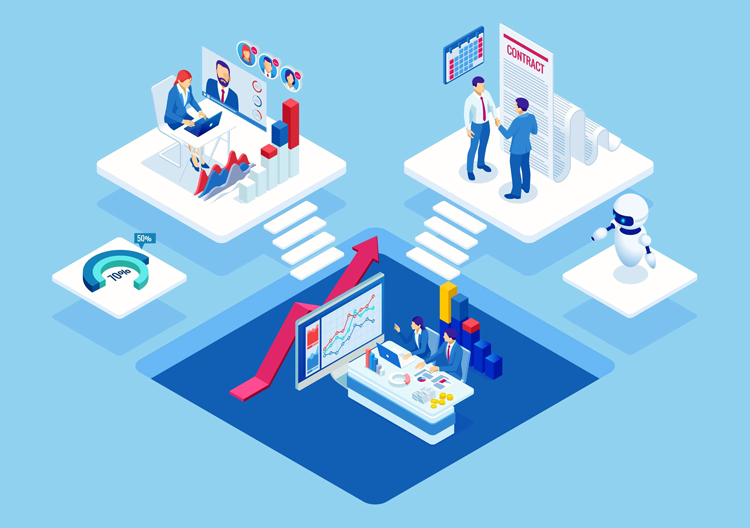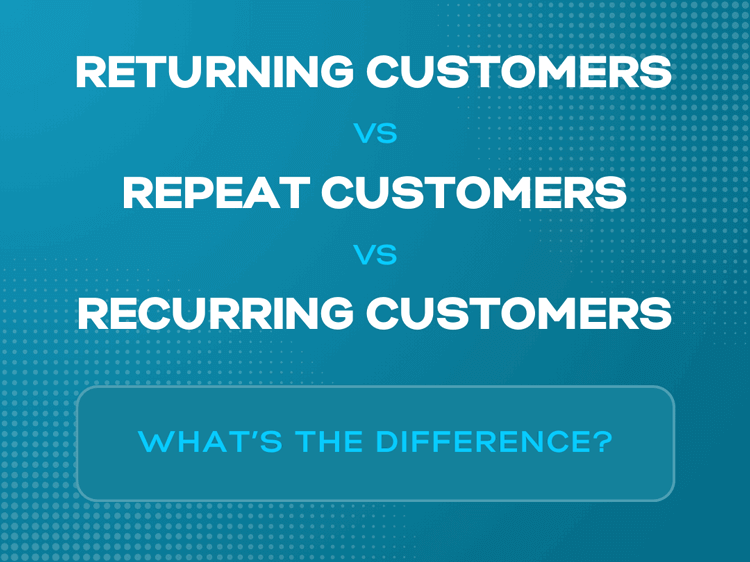How to Streamline the Customer Service Workflow Process: 10 Practical Examples
An effective customer service workflow process is the backbone of any successful customer support operation.
Whether handling ticketing systems, live chats, or phone inquiries, each step in the workflow must be optimized. This helps reduce response times and improve resolution rates. By identifying inefficiencies and implementing streamlined practices, businesses can not only enhance the customer experience but also reduce operational costs.
In this article, we will examine the key methods for streamlining your customer service workflow process and provide 10 real-world examples of how to refine these processes for maximum efficiency.

What is a Customer Service Workflow Process?
A customer service workflow process is a defined series of steps that guide how customer service teams handle inquiries, issues, or requests from customers. These workflows typically cover every stage of interaction, from the moment a customer contacts support to the resolution and follow-up.
Workflows can vary significantly depending on the tools and systems in place. For example, a workflow might involve:
- Automated ticketing systems
- Live chat support
- Or even escalation protocols for more complex issues
By mapping out these processes, companies can better allocate resources, avoid bottlenecks, and deliver a smoother experience for both customers and employees.
Benefits of Streamlining Customer Service Workflow Processes
Streamlining your customer service workflow process brings a range of benefits that directly impact both the customer experience and your team's performance. By refining and optimizing these workflows, businesses can achieve:
-
Faster Response Times
A streamlined workflow eliminates unnecessary steps and automates routine tasks, allowing customer service teams to respond to inquiries faster. This leads to shorter wait times for customers and quicker issue resolutions.
-
Improved Customer Satisfaction
When workflows are optimized, customers receive consistent and reliable support. Whether they're reaching out via email, live chat, or phone, a streamlined process ensures that they experience minimal friction.
-
Increased Efficiency and Productivity
Streamlined processes reduce redundancies, enabling customer service teams to focus on high-priority tasks. With fewer manual processes and less room for error, agents can handle more inquiries in less time, improving overall productivity.
-
Cost Savings
By automating repetitive tasks and reducing the need for manual intervention, businesses can cut operational costs. This not only saves time but also reduces the need for large support teams, while still maintaining high-quality service.
-
Better Data and Insights
A well-structured workflow allows for better tracking of customer interactions. Companies can analyze this data to:
- Identify common issues
- Track performance
- Implement continuous improvements based on customer feedback and service metrics
How to Generally Streamline Customer Service Workflow Processes
To promote the efficient operation of any customer service workflow process, it's essential to take proactive steps in identifying areas of improvement and implementing best practices. Below are key strategies to streamline your customer service workflows:
-
Assess Current Workflows
Before making changes, take the time to evaluate your current workflows. Identify bottlenecks, repetitive tasks, or unnecessary steps that slow down the process. By understanding these gaps, you can prioritize which areas need streamlining first.
For example, if your escalation process takes too long, consider whether certain levels of approval can be bypassed to ensure a quicker resolution.
-
Collect and Analyze Feedback from Customers and Employees
Gathering insights from both customers and service teams helps you understand pain points from different perspectives. Customers can highlight areas where they experience delays, while employees may notice inefficiencies in the internal process.
You could implement post-service surveys for customers and organize monthly 1:1 sessions between staff and managers to identify challenges and improvement areas.
-
Implement Automation Tools
Automation can significantly speed up routine tasks like ticket routing, status updates, and sending confirmation emails. AI-powered chatbots, for instance, can manage repetitive inquiries. This will allow agents to focus on more complex issues.
Suppose your organization frequently receives questions about a product feature. In that case, automated chatbots can direct customers to specific resources or provide answers instantly.
Automation is also invaluable when dealing with widespread issues, such as a battery drain caused by a software update.
Rather than overwhelming your staff with repeated inquiries, automated systems can handle these questions consistently.
Read More: What is AI Ticketing and 10 of Its Benefits to Customer Support Businesses
-
Standardize Procedures and Protocols
Developing standardized workflows brings consistency across all customer interactions. This means creating step-by-step procedures for handling different types of inquiries, regardless of the communication channel (phone, email, or chat).
For example, if customers often demand to speak with a manager about phone plan pricing, agents should be trained to first route the customer to a retention team. This way, they can resolve the issue efficiently without escalating it unnecessarily.
-
Train and Empower Customer Service Teams
Providing your team with the right training and detailed process documentation is crucial to ensure they can follow streamlined processes effectively.
Empowering agents to make decisions independently, such as issuing refunds within a certain threshold without needing managerial approval, allows them to resolve issues quickly and without unnecessary delays.
10 Specific Customer Service Workflow Examples and How to Streamline Each
-
Ticketing System Workflow
A ticketing system workflow involves managing incoming customer requests, assigning them to the right team or agent, and tracking their progress until the issue is resolved.
This workflow is important for organizing and prioritizing inquiries, especially in high-volume support environments.
How to Streamline It
To streamline your ticketing system workflow, automate ticket routing based on issue type, priority, or department. Use AI-powered tools to automatically categorize and assign tickets to the appropriate team.
Additionally, setting up automated status updates can keep customers informed without requiring manual intervention from your team.
For example, If the question is in regard to a cell phone service outage, route the inquiry to the technical team at a high priority. Keep the customer informed on the status of the situation throughout (i.e. "We are now working on the issue and should have it resolved in 2-3 hours").
Suggestion: Consider using Giva's Customer Service Software in the Cloud, which includes a comprehensive ticketing system to automate and streamline your customer service workflows. With this program, you can easily assign tickets, track their progress, and keep customers updated with automated notifications.
-
Live Chat Support Workflow
A live chat workflow enables real-time customer interaction. This allows agents to handle multiple inquiries at once.
This is a critical part of customer support as it offers immediate assistance, which many customers prefer over email or phone support.
How to Streamline It
To streamline live chat workflows, integrate chatbots to handle common or repetitive queries.
For example, if a customer asks about office hours or a return policy, a chatbot can provide the answer instantly, freeing up agents to focus on more complex issues.
Additionally, consider setting up pre-chat surveys to gather necessary information up front, such as the customer's account details or the nature of the issue. This reduces the time agents spend asking basic questions, allowing them to jump directly into problem solving.
-
Email Support Workflow
Email support workflows involve managing customer inquiries sent via email, which can range from simple requests to complex issues that require escalation.
Unlike live chat, email support typically deals with longer response times but provides a detailed and trackable communication thread.
How to Streamline It
To streamline your email support workflow, set up automated email filters that categorize and prioritize incoming requests.
For example, high-priority emails (like those concerning billing issues) can be automatically flagged for urgent handling, while general inquiries can be sorted into a lower-priority queue.
Additionally, implementing template responses for frequently asked questions (such as refund policies or shipping delays) can save agents time and promote consistent communication. This allows agents to focus on personalizing responses for more complex issues.
-
Call Center Workflow
A call center workflow involves managing inbound and outbound customer calls, including call routing, issue resolution, and post-call follow-up.
This workflow is essential for providing personalized support and resolving complex issues that require detailed conversations.
How to Streamline It
To streamline the call center workflow, implement an Automatic Call Distribution (ACD) system to route calls based on the customer's needs or agent expertise.
For instance, if a customer calls with a technical issue, the system can automatically direct the call to a technical support agent instead of a general customer service representative.
Additionally, integrating a customer relationship management (CRM) tool with the call system can provide agents with immediate access to customer history. This can help reduce the time spent on asking background questions and improving resolution time.
-
Social Media Customer Service Workflow
Social media customer service involves responding to customer inquiries, complaints, or feedback across platforms like Twitter, Facebook, and Instagram.
With the public nature of these interactions, quick and accurate responses are crucial.
How to Streamline It
To streamline social media customer service workflows, use social media monitoring tools to track brand mentions and customer inquiries in real-time.
For example, set up alerts for posts that mention your brand along with keywords like "problem" or "issue" to ensure timely responses.
Additionally, create predefined responses for common questions or complaints (e.g., product availability, store hours).
Also, train your team to escalate more complex issues through private channels. This allows you to maintain a fast response time while making sure sensitive matters are handled privately and efficiently.
-
Customer Feedback Collection Workflow
Collecting customer feedback is vital for understanding customer satisfaction and identifying areas for improvement.
This workflow typically involves gathering feedback through surveys, reviews, or direct communication.
How to Streamline It
To streamline your customer feedback collection workflow, automate the process of sending surveys or feedback requests after specific interactions, such as post-purchase or after a customer service resolution.
For example, when a customer's issue is resolved, an automatic email can be triggered asking for feedback on their experience.
Additionally, integrating feedback tools with your CRM software allows you to automatically segment responses based on satisfaction levels. This will allow you to prioritize immediate follow-up with unhappy customers while analyzing overall trends for strategic improvements.
-
Knowledge Base Workflow
A knowledge base workflow involves organizing and updating a library of articles, FAQs, and resources that help customers find answers to common questions on their own.
This self-service tool reduces the load on customer service teams.
How to Streamline It
To streamline your knowledge base workflow, regularly review and update articles based on the most common customer inquiries.
For instance, track which knowledge base articles receive the most visits or trigger customer support follow-ups. Then update those articles for clarity and accuracy.
Use feedback forms within the knowledge base (e.g., "Was this article helpful?") to continuously improve the content.
Automating updates and notifications when articles are revised can also guarantee customers are always accessing the most current information.
-
Returns and Refunds Workflow
The returns and refunds workflow involves processing customer requests for product returns or refunds.
These can often be time-sensitive and detail-oriented processes.
How to Streamline It
To streamline your returns and refunds workflow, set up an automated process that allows customers to initiate returns or refunds online, reducing the need for manual handling.
For example, you can integrate an automated return portal on your website where customers can enter their order details, select a reason for the return, and print a return label.
Additionally, automate communication to update customers on the status of their return or refund, such as sending an email when the return is received and when the refund is processed. This minimizes back-and-forth communication and creates a smoother experience for both customers and staff.
-
Onboarding New Customers Workflow
The onboarding workflow assists new customers with initially using your product or service. This can help them understand its features ensuring a smooth start.
How to Streamline It
To streamline the onboarding workflow, automate welcome emails and tutorials based on customer actions.
For example, when a new customer signs up, they can automatically receive a series of onboarding emails with helpful tips, video tutorials, and FAQs.
You can also set up an in-app onboarding process that triggers guided tours or pop-up tips as customers use key features for the first time. This reduces the need for manual customer support while helping new customers quickly get up to speed.
-
Escalation Workflow
An escalation workflow involves transferring complex or unresolved customer issues to higher-level support. This should result in the problem being addressed by the appropriate person or department.
How to Streamline It
To streamline the escalation workflow, implement predefined rules that automatically escalate issues based on criteria such as issue type, urgency, or customer priority.
For example, if a technical issue remains unresolved for more than 24 hours, the system can automatically escalate it to a senior technician or manager.
Make sure escalations come with detailed case histories, so the new handler has all the necessary information without needing to ask the customer to repeat details. This reduces delays and prevents customer frustration, causing a smoother handoff and quicker resolution.
Wrapping Up: Elevate Your Customer Service with Streamlined Workflows
Streamlining your customer service workflow process is key to enhancing efficiency, improving response times, and delivering a seamless customer experience. By focusing on refining workflows, gathering feedback, leveraging automation, and standardizing procedures, you can optimize operations across the board.
From ticketing systems to live chat and social media support, applying these strategies can help your team provide faster, more effective service while keeping customers satisfied and coming back!
Giva Can Help Streamline Your Customer Service Workflows
Giva's Customer Service Software gets you up and running in days, and your customer service team can be trained in hours on our intuitive and friendly interface. Giva provides video tutorials, self paced tours, quick start guides and FAQs.
Features include:
- AI Copilot capability: Harness the power of Giva's AI Copilot to effortlessly refine responses and quickly access and format solution information, empowering agents to address customer issues with accuracy and efficiency
- Knowledge base: Stop reinventing the wheel with a searchable knowledge base, leverage valuable customer service resolutions previously created to resolve similar tickets
- Customer self-service portal: Provide customers round-the-clock access to customer service resources, so they can resolve their own issues before contacting your agents
- Automate and schedule tasks and ticket workflows: Automatically open tickets on a scheduled and recurring basis, and automate escalation and closure of tickets
Let Giva partner with you for all your customer support needs. Book a free Giva demo to see our solutions in action, or start your own free, 30-day trial today!





